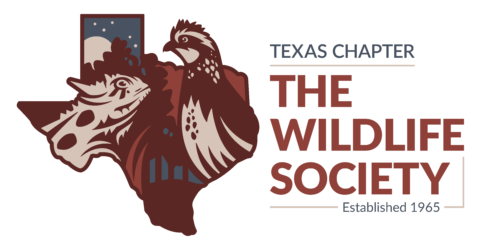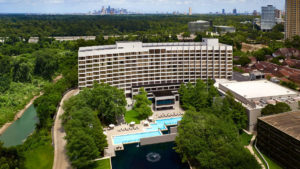Presented Paper and Poster Presentation Abstract submission deadline is November 30, 2023.
In addition to the Plenary session, the meeting will offer technical paper sessions, and an expanded poster presentation session for students (undergraduate or graduate) and wildlife professionals. Best poster presentation by an undergraduate and graduate will be awarded as in previous years. Papers/posters presenting the results of wildlife field investigations and analyses as well as topic reviews of interest to wildlife students and professionals in Texas are encouraged. Paper (oral) presentations should present results or outcomes and abstracts reporting preliminary or no data should be submitted as a poster. Only one poster will be judged per student presenter, though students may present more than 1 poster.
Abstracts should be submitted digitally via the abstract submission website : Submit Abstract
Please indicate your preference for presentation format (i.e., paper, poster, or no preference) and session (i.e., Clarence Cottam Award, or whether you would like to be included in the judging for the best poster presentation awards). Again, only one poster will be judged per student presenter, though students may present more than 1 poster. For those entering no preference, a decision will be made by the Program Committee and presenter notified via email. Any questions pertaining to abstract submission should be directed to Program Co-Chairs: program@tctws.org.
Contributed papers will be scheduled at 15-minutes intervals to include time (2–3 minutes) for questions and comments. All presenters will be notified of the day, time, and location of their presentations, and provided with instructions on how to prepare for the sessions. Clarence Cottam Award presentations will be judged on topic originality, scientific procedures, quality of display, accuracy of conclusions, and response to question from judges. Full Clarence Cottam Award instructions can be found here.
Poster dimensions should be no larger than 4ft wide x 3 ft tall.
Abstract Format
Abstracts should be no longer than 250 words and follow The Journal of Wildlife Management format. Abstracts should be concise and include general problem statement, brief review of methods/experimental design, results, and management implications. For needed statistical significance statements, report P-values only (no need for exact statistical test results). Please follow formatting instructions on the abstract submission website.
Sample Abstract (please note not to use scientific names in title; use only in body of abstract)
LANDSCAPE EFFECTS ON GENE FLOW AND GENETIC STRUCTURE OF NORTHERN BOBWHITE IN TEXAS AND THE GREAT PLAINS
Katherine S. Miller, Caesar Kleberg Wildlife Research Institute, Texas A&M University–Kingsville, Kingsville, TX, 78363, USA
Leonard A. Brennan, Caesar Kleberg Wildlife Research Institute, Texas A&M University–Kingsville, Kingsville, TX, 78363, USA
Randy DeYoung, Caesar Kleberg Wildlife Research Institute, Texas A&M University–Kingsville, Kingsville, TX, 78363, USA
Fidel Hernández, Caesar Kleberg Wildlife Research Institute, Texas A&M University–Kingsville, Kingsville, TX, 78363, USA
X. Ben Wu, Department of Ecosystem Science and Management, Texas A&M University, College Station, TX, 77843-2138, USA
Abstract: Northern bobwhite (Colinus virginianus) populations have declined due to habitat loss and fragmentation. Northern bobwhite have been considered poor dispersers, so biologists expect a moderate population structure and low genetic diversity in fragmented areas. Our goal was to determine how landscape affects the genetic structure of northern bobwhite in Texas and the Great Plains. We collected tissues from 641 northern bobwhites in 23 populations, and amplified 13 microsatellite loci. We determined population structure (FST) and genetic distance between populations (Dest). We used a land cover map (National Bobwhite Conservation Initiative) to develop a landscape resistance matrix. We compared Dest to geographic distance and resistance with Mantel and partial Mantel tests. Populations showed low levels of structure (FST = 0.025). We found moderate correlations to geographic distance (r = 0.542, P < 0.001) and landscape resistance (r = 0.416, P = 0.001). There was a significant correlation between Dest and geographic distance when we accounted for resistance (r = 0.388, P < 0.001), but no significant correlation between Dest and resistance when we accounted for geographic distance. A spatial principal component analysis for South Texas samples revealed a global structure. Low genetic structure and moderate genetic diversity may suggest that more northern bobwhite individuals are dispersing further than previously thought. Other possible explanations lie in the northern bobwhite’s fall covey shuffle, their boom-and-bust population cycle, and stochastic events. Habitat is an important factor for northern bobwhite; determining how habitat affects gene flow will help biologists to manage northern bobwhite.




